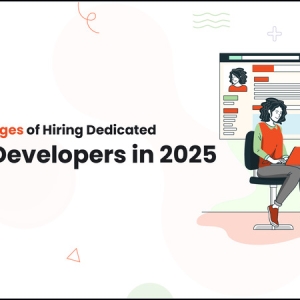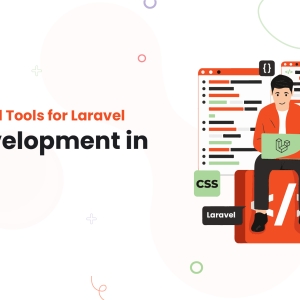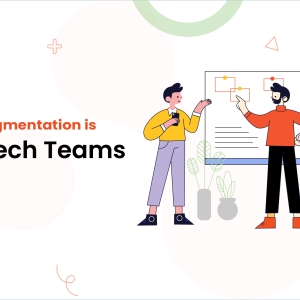Introduction
The MERN stack development offers a detailed framework to build web applications using a cohesive set of technologies. There are four main components of this Stack, which are MongoDB, Express.js, React.js and Node.js and all of them work together to provide a more balanced structure to handle data storage, back-end routing, a front-end rendering as well as a server-side processing.
As digital products are increasingly in need of an agile and scalable solution, the MERN developers should integrate tools and strategies which allows flexibility in the development.
In this article, we’ll learn about effective tools for MERN Development, what is a MERN development and what are the Best Practices to follow
What is a MERN Stack Development
MERN stack development means the process of building web applications using MERN Stack architecture, a set of JavaScript based technologies. There are four components in a MERN stack development, which are as follows:
- MongoDB: A NoSQL database that stores data as JSON-like documents, providing flexibility in how data is structured.
- Express.js: A lightweight web application framework that facilitates routing and middleware management, simplifying back-end logic.
- React: A front-end JavaScript library that allows for component-based UI design, making it easier to build, modify, and maintain complex web interfaces.
- Node.js: A runtime environment that runs JavaScript on the server side, supporting non-blocking I/O operations and facilitating scalable server-side processing.
Moreover, MERN Stack Development offers a comprehensive framework for building full-stack web applications, leveraging JavaScript for both client-side and server-side development, making it efficient.
Now, let’s understand what makes MERN Stack Development efficient.
What makes a MERN Stack Development efficient?
MongoDB: Providing Flexibility at the Database Level
- Document-Oriented Structure: A MongoDB’s schema-less document model enables for flexibility in data storage. You can store varying structures in the same collection thus making it ideal for different project requirements and fast iterations.
- Aggregation Framework: A MongoDB’s aggregation pipeline allows developers to transform and filter data with ease. This feature is crucial for adapting to different data processing needs over time.
- Sharding: This feature enables horizontal scaling, thus distributing data across multiple servers. Moreover, it allows your database to handle growth in traffic and data volumes without sacrificing the performance.
The second tool in the list is Express.js. Let’s understand it briefly.
Express.js: Flexible Back-End Routing
- Middleware: An Express.js offers a powerful middleware system which enables you to integrate a variety of functionality seamlessly into an application. This modular approach would allow you to make rapid adjustments in your app’s back end.
- RESTful APIs: The MERN Stack framework simplifies the creation of RESTful APIs that offers a flexible way for the back end to communicate with other parts of the system. Additionally, this structure also allows you to accommodate changes to front-end requirements or integrations with third-party services.
- Routing: An Express.js’s routing system provides you a direct way to define various routes for an application. This flexibility would help you when you are changing or adding new endpoints as the project evolves.
React: Adaptive Front-End Development
- Component-Based Architecture: React’s component based design provides you a modular and reusable code. Further, this approach lets you manage any changes to the user interface effectively, thus allowing a quick update or an addition to the front end.
- Virtual DOM: A virtual DOM implementation speeds up the UI rendering by reducing the impact of a frequent change or a dynamic content on a performance.
- State Management: Tools like Redux or Context API can manage the state of React applications, ensuring that the data flow remains consistent even as UI components change.
Node.js: Scalable Server-Side Processing
- Event-Driven Architecture: A Node.js’s non-blocking I/O and an event-driven model makes multiple requests handling possible concurrently, which is essential for any scalable back-end operation.
- NPM Packages: A Node Package Manager allows a vast repository of packages by offering tools for everything from a database integration to testing. This bunch of extra resources would enhance development flexibility thus enabling you to quickly incorporate new functionalities.
- Clustering: Node.js supports clustering, which allows applications to use multiple CPUs for processing tasks concurrently, enabling scalability and efficient load distribution.
Now, let’s understand the Best Practices of achieving flexibility with MERN Stack Development.
3 Best Practices for MERN Stack Development
Version Control
Using tools like Git is necessary to manage code changes effectively. Moreover, a Git offers branching and merging capabilities, thus allowing teams to develop new features or experiment without disrupting the main codebase. Doing this will ensure that there are various iterations and changes that can be tracked, reviewed and implemented in a controlled manner.
Code Reviews: By implementing a compulsory code review process can help in enhancing the practice, thus ensuring that each change is vetted by another developer, thus reducing the risk of introducing any bug or security vulnerability.
Continuous Integration: This helps in integrating a new code into the main branch regularly, thus allowing for immediate testing and an early detection of potential issues.
Microservices Architecture
Breaking down your application into microservices provides flexibility by allowing independent updates to different modules . This architecture minimizes the impact of changes to one part of the system on others, providing the following benefits:
Independent Development: Microservices enable different teams to work on separate parts of the application concurrently, enhancing productivity and reducing bottlenecks.
Scalability: This architecture supports horizontal scaling, where individual services can be scaled independently based on demand, optimizing resource usage .
Modular Updates: Microservices allow for easier updates and maintenance, as changes can be made to specific services without impacting the entire system.
CI/CD Pipeline
A continuous integration and a continuous deployment pipeline streamlines the testing and deployment process, enabling a rapid iteration and adaptation.
Automated Testing: CI/CD pipelines include automated testing suites that run tests on each new code commit, ensuring that changes do not introduce new bugs or break existing functionality.
Automated Deployment: Once testing is complete, the pipeline can deploy new code directly to production or staging environments, reducing manual intervention and expediting the release cycle.
Versioning and Rollback: CI/CD pipelines help manage version control and allow for quick rollbacks in case of issues, ensuring minimal disruption to users and clients.
By implementing these practices, MERN stack developers can create applications that are flexible, resilient, and scalable, adapting to changing requirements and evolving market trends efficiently.
Now, let’s understand how Acquaint Softtech can help in MERN Development
How Acquaint Softtech can help in MERN Development
Acquaint Softtech is a company based in India, specializing in software development outsourcing and IT Staff Augmentation Services. We primarily work with the Laravel framework to build websites and software that meet our clients' specific needs. If your company operates remotely and needs to hire remote developers, we can help you find the right talent quickly. Our onboarding process is straightforward, enabling you to integrate developers into your team within 48 hours.
We offer competitive rates for our remote developer services, charging just $15 per hour. We're also expanding our expertise to include MEAN and MERN Stack Development, providing an opportunity to hire MEAN stack developers and hire MERN stack developers from our team to enhance efficiency and innovation in your projects.
Wrapping Up!
Flexibility is key to the success of MERN stack development projects, ensuring they can adapt to changing requirements and evolving market trends. By leveraging the right tools and best practices, developers can create applications that are resilient, scalable, and adaptive, meeting both current needs and future demands effectively.
FAQs MERN Stack Development:
What is the MERN stack?
The MERN stack is a set of JavaScript-based technologies including MongoDB, Express.js, React, and Node.js, used for full-stack web development.
How does MongoDB contribute to MERN stack development?
MongoDB provides flexibility at the database level through its document-oriented structure, aggregation framework, and sharding features.
What is the significance of Express.js in MERN development?
Express.js offers flexible back-end routing, a middleware system, and simplifies the creation of RESTful APIs, making it easier to handle various functionalities.
Why is version control important in MERN stack development?
Version control, through tools like Git, helps manage code changes effectively, providing branching and merging capabilities, allowing controlled tracking, reviewing, and implementation of iterations.
How does Acquaint Softtech assist with MERN stack development?
Acquaint Softtech offers software development and IT staff augmentation services, with expertise in MERN stack development, helping businesses find skilled developers quickly and affordably.






